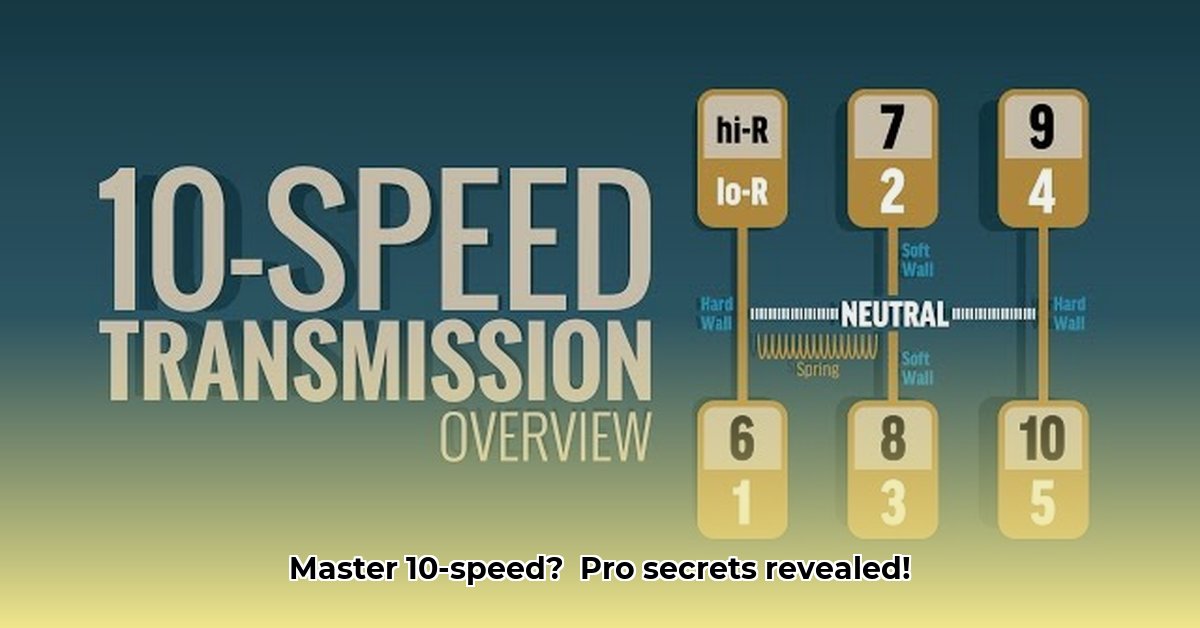
Understanding the 10-Speed Transmission
Before you even attempt to shift gears, you need a solid grasp of your 10-speed transmission's layout and function. This isn't your average car gearbox; it's a sophisticated system designed for power and efficiency in heavy-duty applications. It's fundamentally divided into high and low ranges, each with its own set of gears. The low range is your ally on hills and during slow maneuvers, while the high range is ideal for highway cruising. Understanding this distinction is crucial for smooth and efficient driving. Think of it like having two separate gearboxes—one for conquering mountains, the other for gliding across plains. For more on heavy-duty vehicle dimensions, check out these helpful dimensions.
The gear shift pattern itself might appear daunting initially, but with consistent practice, it becomes second nature. Many drivers find visual aids, such as a clearly displayed diagram in the cab, invaluable during the learning process. Isn't it interesting how a simple visual aid can significantly improve the learning curve?
The Art of Double Clutching: Smoother Shifts & Extended Transmission Life
Double clutching, while sounding complex, is the key to extending your transmission's lifespan and ensuring smoother shifts. This technique synchronizes engine speed with transmission speed before shifting, preventing harsh jolts and unnecessary wear and tear. Think of it as carefully easing two dance partners together instead of throwing them clumsily into each other's arms.
Here's a step-by-step breakdown:
- Fully depress the clutch pedal: This disengages the engine from the transmission.
- Shift to neutral: This prepares the system for the next gear.
- Briefly release the clutch pedal: This allows the engine's RPM to increase slightly – a crucial step for smoother transitions.
- Depress the clutch again and select your new gear: Carefully choose your next gear.
- Gradually release the clutch while gently increasing the throttle: Smoothly transition between gears.
Mastering double clutching takes dedicated practice, but it results in smoother shifts and significantly extended transmission longevity.
Efficient Upshifting and Downshifting: Fuel Efficiency and Control
Upshifting (moving to a higher gear) is paramount for maximizing fuel efficiency. Aim for approximately 1200-1300 RPM when upshifting; this keeps your engine running smoothly and minimizes fuel consumption. Downshifting, conversely, is all about control, especially crucial for maintaining speed on descents or when navigating challenging terrain. The key is matching engine speed to the upcoming gear before shifting, preventing strain and sudden deceleration.
Did you know that consistently efficient shifting can improve fuel economy by up to 15%?
Starting, Stopping, and Navigating Various Conditions
Your starting gear selection depends heavily on the load and incline. A heavy load uphill might require starting in first or even second gear to prevent stalling, whereas on level ground, second gear might suffice. Stopping requires a smooth, gradual downshifting process to avoid jarring halts and potential transmission stress. Never rush these crucial transitions.
Conquering the Challenges: Hills, Weather, and More
Hill climbing requires a strategic approach. Anticipate inclines and downshift proactively to maintain momentum. For descents, utilize engine braking to regulate speed, reducing brake wear and risk of brake fade. Adverse weather (rain, snow) necessitates reduced speeds, increased following distances, and gentler gear changes.
Troubleshooting Common Problems and Preventative Maintenance
Transmission problems, while not uncommon, are often preventable. A slipping transmission or difficulty shifting can indicate the need for maintenance or repair. Regular inspections and adherence to manufacturer-recommended service intervals are your first line of defense against costly repairs. Regular transmission fluid checks are also crucial for early identification of potential issues.
Regular maintenance can extend the lifespan of your transmission by up to 30%, according to industry experts.
Actionable Intelligence: Tailored Strategies for Different Skill Levels
| Driver Experience Level | Recommended Actions |
|---|---|
| Beginner | Focus on smooth gear changes and mastering double clutching. Practice on level ground. |
| Intermediate | Practice hill starts and descents in varied conditions. Experiment with different load levels. |
| Advanced | Explore advanced techniques and anticipate conditions. Develop intuitive gear selection. |
Mastering your 10-speed transmission requires dedication and consistent practice. As you refine your skills, you'll develop a keen sense of your rig's capabilities and limitations, becoming a more confident and efficient driver. The open road awaits!